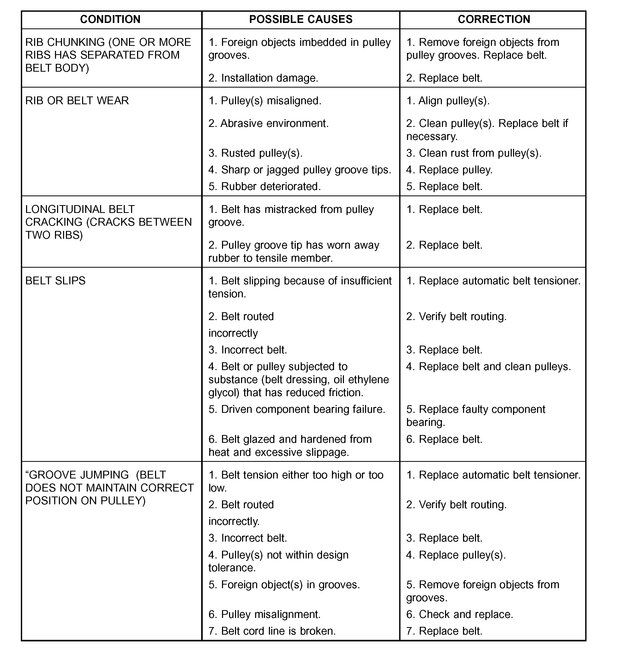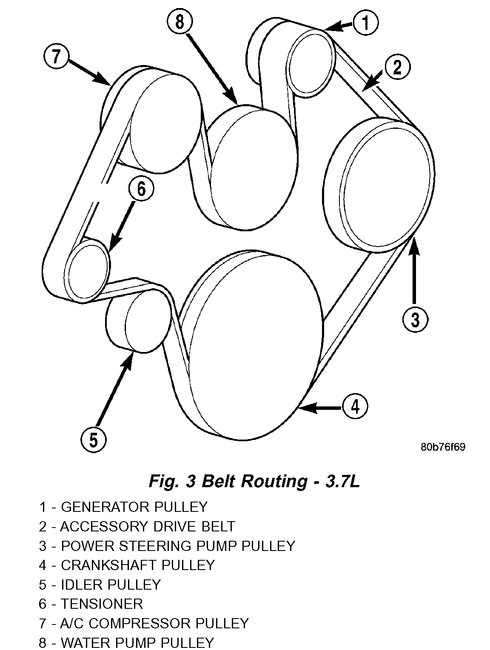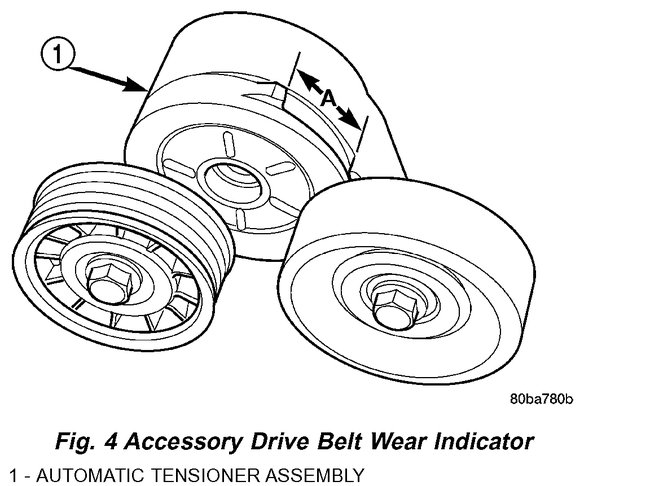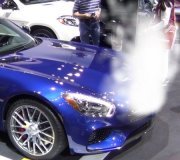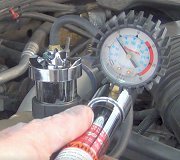Hi and thanks for using 2CarPros.com.
Since the problem has not been solved with a new pump, thermostat, and radiator, that does not leave too much. Since the fans are turning on when they should, I agree with you. Replacing a good fan is not going to solve anything. I assume the cooling system has been properly filled and bled.
The water pump on your vehicle is driven by the serpentine belt (accessory belt) which also drives the alternator, AC compressor. Check to make sure it is tight and not allowing the water pump to turn slow. Also, it is even possible to have the belt routed incorrectly. Here are the directions for removing and replacing the belt. It includes a picture of the belt tension-er and its specifications along with the routing diagram.
REMOVAL
NOTE: The belt routing schematics are published from the latest information available at the time of publication. If anything differs between these schematics and the Belt Routing Label, use the schematics on Belt Routing Label. This label is located in the engine compartment.
CAUTION: DO NOT LET TENSIONER ARM SNAP BACK TO THE FREEARM POSITION, SEVERE DAMAGE MAY OCCUR TO THE TENSIONER.
Belt tension is not adjustable. Belt adjustment is maintained by an automatic (spring load ) belt tensioner.
1. Disconnect negative battery cable from battery.
2. Rotate belt tensioner until it contacts its stop. Remove belt, then slowly rotate the tensioner into the freearm position. (Fig. 3).
INSTALLATION
NOTE: The belt routing schematics are published from the latest information available at the time of publication. If anything differs between these schematics and the Belt Routing Label, use the schematics on Belt Routing Label. This label is located in the engine compartment.
Belt tension is not adjustable. Belt adjustment is maintained by an automatic (spring load) belt tensioner.
1. Check condition of all pulleys.
CAUTION: When installing the serpentine accessory drive belt, the belt MUST be routed correctly. If not, the engine may overheat due to the water pump rotating in the wrong direction (Fig. 3).
2. Install new belt (Fig. 3). Route the belt around all pulleys except the idler pulley Rotate the tensioner arm until it contacts its stop position. Route the belt around the idler and slowly let the tensioner rotate into the belt. Make sure the belt is seated onto all pulleys.
3. With the drive belt installed, inspect the belt wear indicator (Fig. 4). The gap between the tang and the housing stop ( measurement A ) must not exceed 24 mm (0.94 inches).
____________________________________________________________
If everything checks out good, do this simple check. When the engine is running and at operating temperature, inspect the upper and lower radiator hoses to make sure they are not collapsing. If they check good, that is about the extent of the cooling system. However, keep in mind, a bad head gasket can cause a heating up issue. Here are a couple links which talk about symptoms and how to check for a bad head gasket. I realize you are not seeing the mixing of oil and coolant, but that does not always mean there is not a leak. Exhaust gases can get into the cooling system causing problems. Take a look through this link. It discusses the symptoms as well as how to check.
https://www.2carpros.com/articles/head-gasket-blown-test
Let me know what you find or if you have other questions.
Take care,
Joe
Images (Click to make bigger)
Friday, August 10th, 2018 AT 8:11 PM
